Morel
If you are very lucky, you will find this far from common, excellent tasting mushroom in Spring. All Morels must be well cooked before consumption.
| Mushroom Type | |
| Common Names | Morel (EN), True Morel, Common Morel, Yellow Morel (US), Morel Cyffredin (CY), Smardz Jadalny (PL), Ízletes Kucsmagomba (HU) |
| Scientific Name | Morchella esculenta |
| Synonyms | Morchella rotunda, Morchella crassipes |
| Season Start | Mar |
| Season End | May |
| Average Mushroom height (CM) | 20 |
| Average Cap width (CM) | 15 |
Cap
Conical or ovate with a network of irregular ridges and pits looking honeycomb-like. The cap is hollow and joined to the stem at its edge. It is yellow, paling with age usually with lighter ridges. Sometimes it discolours to ochre or rusty orange where bruised or with aging. Size and colour can vary greatly within this particular mushroom, many varieties have been described by mycologists.
Stem
White/cream, hollow sometimes widening towards a bulbous base. Uneven furrows run vertically up the stem.
Flesh
Fairly thin, white on the inside. It has a faint pleasant smell that intensifies after drying.
Habitat
Open woods, pastures, gardens, wasteland, gravel and often on verges between roads and woods or fields. Also on sand dunes. It is mostly reported from poor alkaline soils such as chalk and limestone.
Possible Confusion
The False Morel (Gyromitra esculenta), pictured, but this is more lobed or brain-like rather than the pitted and honeycomb like cap of the morel. The False Morel also differs in not having a completely hollow cap.
The Black Morel (Morchella importuna) can be similar, even in colour when young, but usually the ridges are arranged in fairly regular vertical lines, unlike the completely random honeycomb of the Yellow Morels. The ridges on the Black Morel also become darker than the rest of the cap with age, unlike the paler ridges of Yellow Morels.
The Common Morel (Morchella vulgaris) is very closely related to the Morel. It is usually more grey in colour specially when young. The ridges of the cap are thicker and the pits are more irregular and labyrinthic in shape. The Morel has thinner edges and polygonal shaped pits. Intermediate forms exist that may be hard to differentiate at the very young or very mature stage.
The “Morels” are a large group (technically called a clade or section) of very similar species, and mycologists still haven’t established exactly how many species exist, their distribution, and how they differ from each other. The forager shouldn’t worry about precise distinction as all Morels seem to be excellent edibles.
Spore Print
Pale cream to yellow. Ellipsoid.
Taste / Smell
Excellent, strongly mushroomy and even meaty. Must be well cooked before consumption. All Morels are poisonous when raw or undercooked causing gastric upsets and other alarming symptoms.
Frequency
Uncommon.
Other Facts
While highly sought after, this can be a difficult mushroom to go out looking for and is usually found accidentally while looking for other edibles.
Although there are recipes at the bottom of the page the Morel is such a delicious and hard to find mushroom that it is best simply cooked in butter and seasoned. As pointed above it just needs to be well cooked, so no lightly tossed Morels.



 (11 votes, average: 3.73 out of 5)
(11 votes, average: 3.73 out of 5)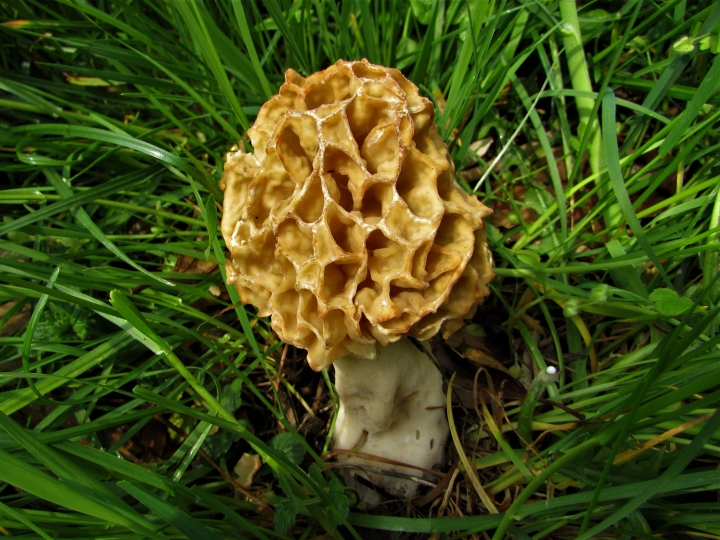















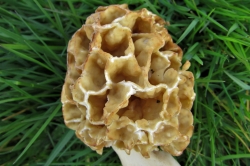
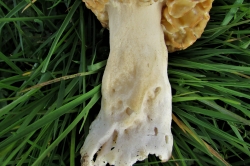
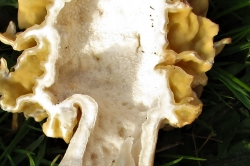
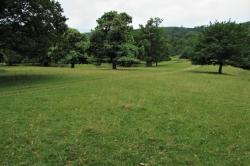
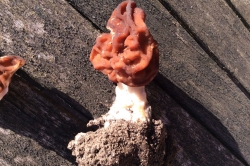




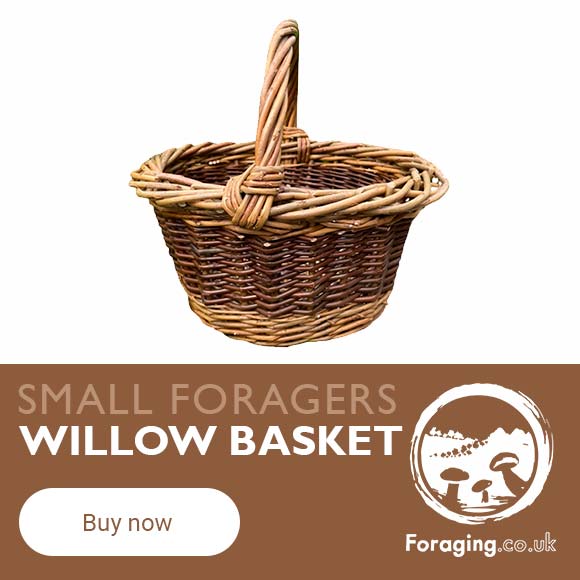

2 comments for Morel
Found about 10 of these in my yard. Can you sell these?
If they were found ion your property, they are yours to sell. Be 100% certain of ID before eating or selling wild mushrooms.